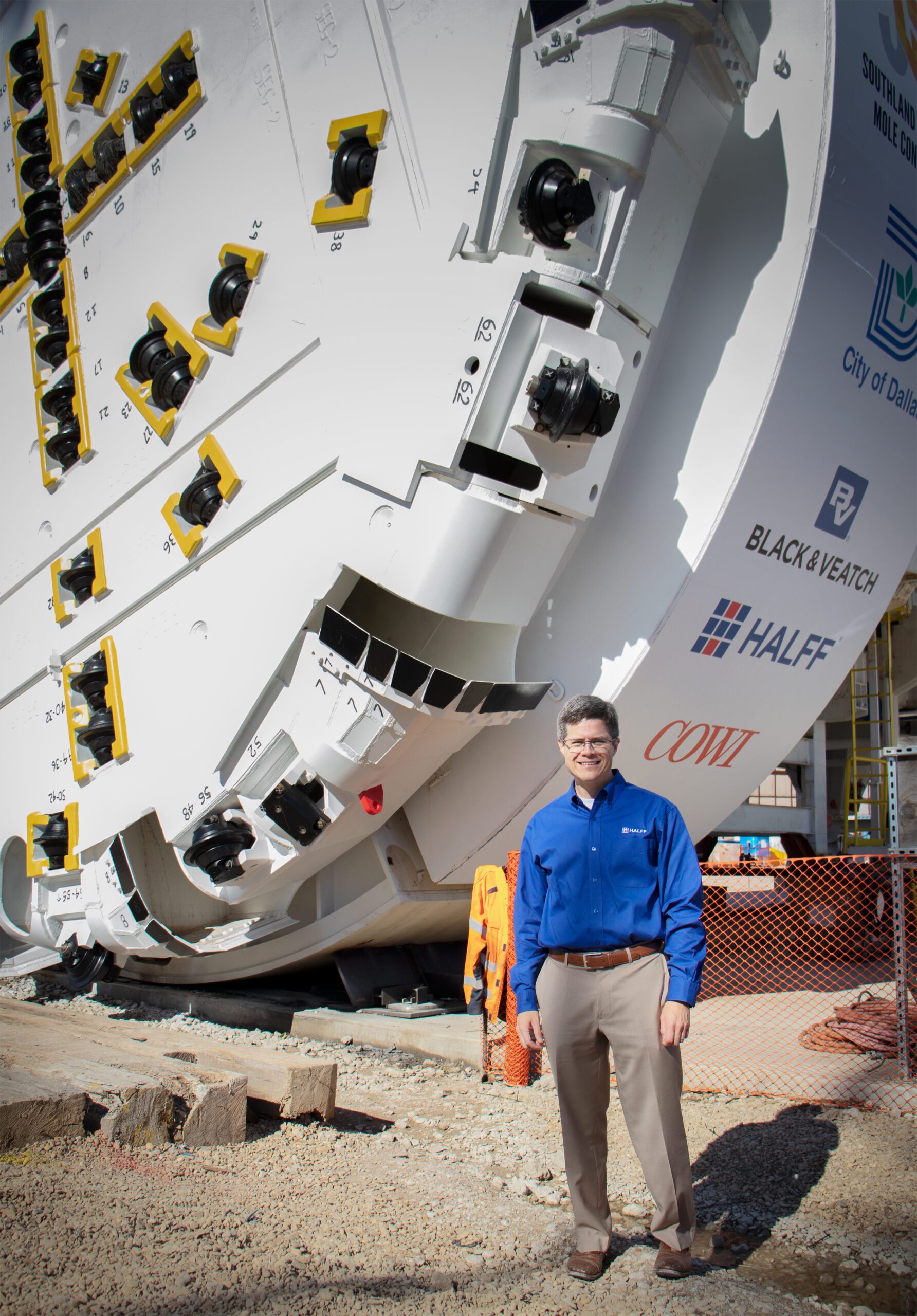Light at the End of the Tunnel: Drainage Relief for East Dallas
The Mill Creek/Peaks Branch/State-Thomas Drainage Relief Tunnel (Mill Creek Tunnel) may be the largest project many of us will never see. With a $320 million total cost, it is one of the largest projects Halff has ever done.
The Mill Creek Tunnel—the largest tunnel currently under construction in the United States—will provide needed stormwater drainage relief to help save lives and protect residents, schools, medical facilities, businesses and streets.
The tunnel, which will stretch from the State-Thomas District in Uptown Dallas through the Mill Creek and Peaks Branch watersheds, will be constructed mostly underground to minimize neighborhood impacts. It will include five large inlet structures. Once complete, the 5-mile-long tunnel will sit 70 to 150 feet below ground to provide 100-year flood protection for nearly 2,200 commercial and residential properties in the east Dallas area, including Baylor Medical Center and Fair Park.

A Historic Need for Drainage Relief
The Mill Creek and Peaks Branch watersheds in Dallas developed in the 1930s. The open channels became horseshoe culverts and large box culverts that were constructed with roughly a five-year storm frequency capacity. Redevelopment and increased imperviousness diminished the storm drain capacities to closer to a two-year storm frequency.
“These systems work for smaller storms,” said Vice President and Public Works Senior Project Manager Todd Woodson. “However, when the storm sewer capacity is exceeded, the excess water flows through homes, businesses and streets that were built in the historic floodplains.”
Floods in 1995, 2003, 2006, 2007, 2009, 2012 and 2015 have been so severe that homes, businesses, parking lots and roads in Dallas have been filled with water.
The new tunnel, excavated using a tunnel-boring machine, will play a major role in preventing future flooding and property damage. Starting at White Rock Creek, the tunnel will connect to the existing storm-sewer systems and offload systems downstream of the tunnel. The downstream systems will have near 100-year capacity once the tunnel is online.
Cross-Practice Collaboration Key to Project’s Success
The Mill Creek Tunnel effort is a combination of projects. In 2007, Halff was selected to design a drainage relief system for Mill Creek and two drainage-relief projects for Peaks Branch. Halff developed and analyzed 10 alternatives for implementing these projects. The adopted plan is a combined system that provides drainage relief to Mill Creek and Peaks Branch. The tunnel component of the project was revised during the design phase to provide flood relief for the State-Thomas area.
Once the project began, Halff’s Water Resources team developed XPSWMM hydrodynamic models for the Mill Creek, Peaks Branch and East Peaks Branch watersheds, as well as conceptual drainage master plans for Mill Creek, Peaks Branch and East Peaks Branch.
Halff’s Public Works team developed construction plans for the 5-mile tunnel, which consists of a 2-mile-long, 35-foot-diameter segment and a 3-mile-long, 30-foot-diameter segment. Halff also led the design effort for the 30,000 gpm dewatering station that will empty the tunnel for maintenance and inspection.
Halff Practice Areas of Support
- Halff’s Structural practice provided support for subsurface structures.
- The Architecture and MEP Engineering practices fulfilled roles for the dewatering station building.
- The Surveying practice conducted reviews of acquisition documents, set project survey control and provided support for the aerial survey.
- Halff’s Environmental practice performed Phase 1 and Level 2 environmental site assessments to support the property acquisition process. The team also performed jurisdictional-waters delineations and prepared the Nationwide Permit 12, Pre-construction Notification to obtain project authorization from the U.S. Army Corps of Engineers (USACE).
- The Right of Way team assisted the City with property acquisition.
“This project is a legacy project for Halff, and we are looking forward to seeing it constructed,” noted President Pat Kunz. “Building a more resilient city that can stand up to significant rain events is a goal we all share. This project will save lives and properties from the effects of flooding.”




